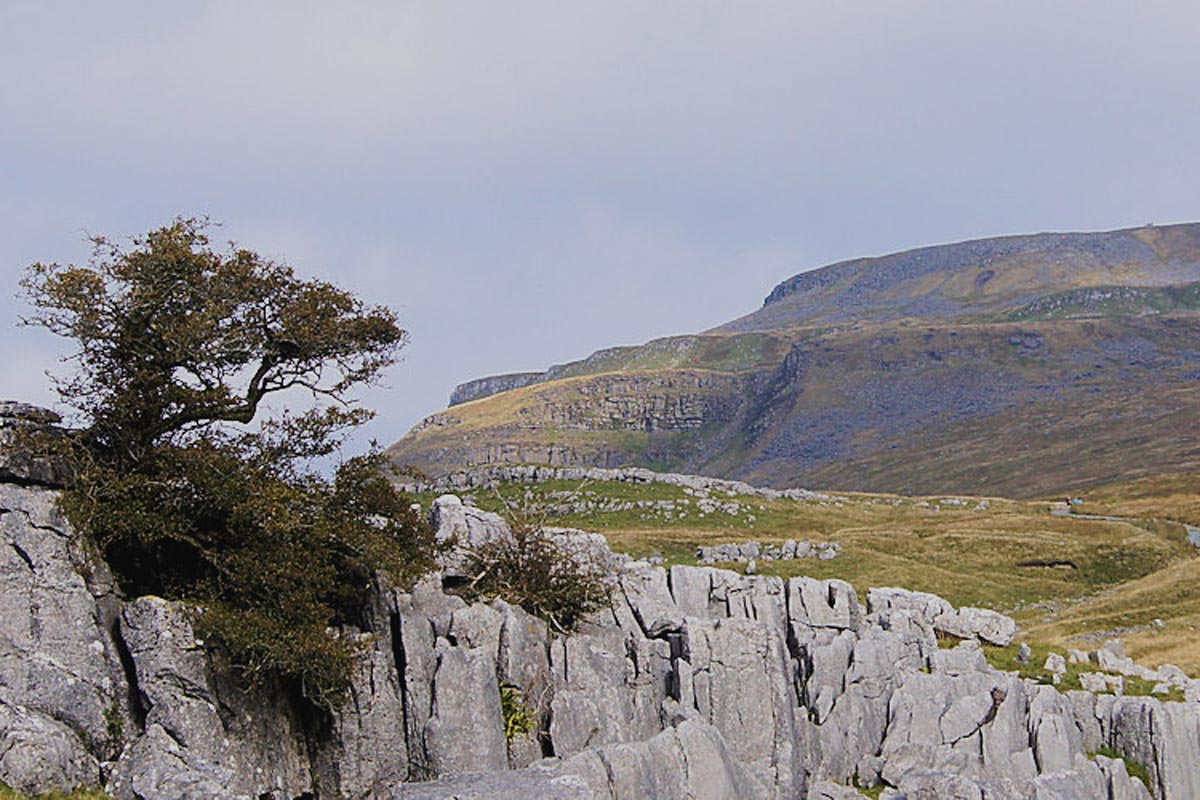Where do emissions come from?
The chart below illustrates the human activity causing climate change. Right now nearly all effort to reduce GHG emissions is focused on the yellow section, energy production at power stations.

Some countries, like France and Norway, have their Energy Markets in public ownership where governments have more control over how energy is produced. Other countries like the UK have private energy markets, requiring private firms to invest in power stations and technologies.
Governments can encourage low carbon energy production through different schemes with tax breaks, subsidies, price guarantees, infrastructure investment and direct funding. Very little has escaped George Osborne’s budgetary scissors and most low carbon initiatives have recently received the Chancellor’s cut.
To stop GHG emissions pushing global temperatures beyond a 2°C increase, global emissions need to be cut 80% by 2050. In the UK to reduce the heat energy required in homes, funding was available to insulate homes. To electrify the road networks, the UK Government offered tax breaks for electric vehicle owners and investment in electric charging stations.
To reduce emissions in the Manufacturing, Construction and other Industries the UK Government created regulation to reduce energy usage and worked with other EU nations to provide emission trading schemes for Industry.
Under the current UK Government the majority of funding and public schemes have been closed as part of the public spending cuts.
If the world is to move away from fossil fuels, there will be increased demand from power produced at power stations. Electric vehicles will replace petrol vehicles and homes and businesses will be heated and cooled through power from renewable electricity.
A short introduction to renewable power generation technologies
Biomass and Waste Power Stations
Biomass is burnt in power stations to a power steam turbine to generate electricity. Biomass and waste used in power stations is any organic material such as wood, liquid fuel produced from plants like palm or sugar cane or flammable gas from manure. Biomass is generally considered carbon neutral as GHGs released as burnt have generally been absorbed as the material grew. Biomass and Waste power production is the most popular form of renewable power generation in the EU, partly because gas and coal power stations are easily converted to biomass.
Critics of biomass as a fuel argue the energy used in production and transport is not accounted for. And the land used to grow biomass for fuel is often at the expense of food production in developing nations.
Hydro Power
Moving water in a river or man-made dam turns turbines to generate electricity. The majority of Norway’s electricity is generated from Hydro as they have vast snowy mountains ideal for Hydro power stations.
Wind Power
Wind blows the blades of a windmill to turn a turbine, generating electricity. Wind turbines can be built onshore (on land) or offshore (in the sea). There is more potential for electricity generation from offshore wind as winds are more powerful at sea. However offshore wind farms are more expensive to build and maintain. The shallow waters around Scotland has near 25% of the best wind resources in the EU.
Solar Power
Heat energy or electrical energy can be generate by the sun. The most common form of heat energy is caught when the sun shines onto water panels, hot water then circulated through a heating system. Photovoltaic solar panels generate electricity by electrical reaction when hit by the sun. Obviously, solar technology works best in places with lots of sun, the US has huge solar farms in her hot regions.
Geothermal Energy
At about 10ft under the earth’s surface the temperature is a constant 10-23°C. This heat can be extracted by using thermal conductors to draw up the heat energy. Most geothermal energy production is small scale heating individual homes or buildings, although there is huge potential to scale for industrial processes.
Tidal Wave and Ocean
There’s a lot of power in the seas from moving tides and wave. There are many different technologies, some that sit on the surface of the sea to harness the energy from waves, others that sit on the sea bed in the shallows to harness energy from the moving tidal water. All turn electricity generating turbines.
Carbon Capture and Storage
Coal and Gas can be processed before being burnt in a power station to remove the majority of their greenhouse gas emissions. Or, at the other end of the process smoke from the burning fuel can be caught rather than expelled into the atmosphere and buried back underground.
Nuclear Energy
The EU does not class Nuclear energy as a renewable technology even though nuclear power production is carbon free.

The chart above shows Biomass and Waste is by far the biggest renewable generator of electricity. Renewable energy technologies need to suit their host country resources, for example Norway generate nearly a third of the total Hydro power in the EU because of their geological make-up. Ireland is not an ideal location for solar power!
Governments take into account their national resources when investing in renewables or creating incentives for private investment. Companies and governments evaluate the cost of producing electricity with each technology, using a technique called the Levelised Cost of Electricity.
The total cost of building a power station, the cost of fuel (cost of gas for example), maintenance and labour cost and its power capacity over its life time to calculate the cost per unit of energy. This allows a cost comparison to identify the best technology.
One of the criticisms of renewable power is most technologies are reliant on the weather, that’s often unreliable! Electricity is difficult to store and so without progress in storage technologies, clever electricity management systems and fossil fuel back-up systems are required to maintain a reliable consistent electricity supply.
The oil industry
Fossil fuels are a huge part of our economies, our wealth and living standards directly related to the energy they provide. 2014 was the first year where wealth increased and greenhouse gas emissions didn’t as some countries relied on renewable power. In the past, in creating wealth our economies have relied on burning fossil fuels to power companies and industry.
Many industries are connected to oil and its future and try to protect its use in our economies, not least the oil companies. Also, car manufacturers, aviation and the military are just to name a few. All these sectors are very wealthy and well connected to governments to influence the rate at which we move away from fossil fuels.
Oil price plays an important role in climate change. Oil price is decided by the markets, lots of oil supply means a low oil price. Currently the price of oil is low, means low profits for oil companies. To protect shareholders return oil companies cut back on expensive exercises like oil exploration and difficult extraction.
Oil at the top an oil well is easy to extract. As oil wells become depleted its more expensive for companies to get oil from the wells, increasing the cost of extraction. As we’re depleting the oil wells in easy accessible places on land or in shallow seas, oil companies are looking to extract oil in harsh places like the Arctic. Low price for oil means less difficult extraction and exploration. High price for oil brings the relative cost of renewable technologies down.
A low oil price has also encouraged countries currently subsiding consumer buying of petrol to remove subsidies while the price is low. India and Indonesia have recently removed subsidies.
75% of oil reserves are owned by state run companies, Saudi Arabia’s Saudi Arabian Oil Company, Venezuela’s Petroleos de Venezuela and Iran’s National Iranian Oil Company are three of the largest.
Ideas for the future
By 2050 the needs to cut greenhouse gas emissions by 80%. To do so the world needs to use less energy, use energy that’s low and zero carbon, and help the earth deal with greenhouse gases in the atmosphere to stopping deforestation and promoting vegetation growth.
Energy production is slowly moving away from carbon technologies with numerous technologies available to countries. There are several solutions to deal with intermittent energy production from renewable technologies reliant on unpredictable weather.
Energy grids that spread across wider areas make it less likely conditions will be poor for electricity production everywhere. Moderate weather producing not much electricity in one region can be supported by bigger weather producing more electricity in another region.
The Campaign against Climate Change suggest in their 1 Million Climate Jobs report a clever electricity grid where connected electric cars charged overnight when electricity demand is low feed back into the grid during the day. Better electricity management through peak and off-peak pricing can help spread demand for power.
The ESB in Ireland pioneered a solution using Dam controlled Hydro Power. During off peak times excess electricity is used to pump water into reservoirs. During peak periods when electricity demand is high the water is used to generate power. Gas and Coal powered stations using Carbon Capture and Storage technology to capture 100% of emissions can also be used in peak seasons, although frequent turning switching on and off of these types of stations is not efficient.
Electricity is very difficult to store efficiently, a big challenge for the future is to create better batteries and storage devices.
Through building and transport regulations governments are reducing the demand for electric and heat power. Through subsidies and regulation, old homes are being fitted with better insulation and new homes are built requiring less energy for heating. Regulation to improve the energy efficiency of home appliances is also in place, but a lot more can be done. Smart devices that can cleverly turn themselves on and off during off peak and peak times, without effecting their use, can help reduce energy demand.
Cars and other vehicle manufacturers have emission and fuel efficiency targets. Consumers are encouraged through tax and financial incentives to choose more energy efficient cars. Electrifying the road network and improving car battery technology needs more public and private investment. Cheaper and an improved rail network powered by carbon free electricity can contribute to a cleaner environment.
Air travel contributes only a small fraction of transport emissions, and currently oil is the only fuel with an energy to weight ratio that makes air travel possible. The majority of agricultural emissions come from the digestive systems of farm animals and fertiliser use. Other than reduce air travel and eat less meat, it’s currently difficult to reduce emissions in these sectors.
Currently regulation is forcing industry to be more efficient with energy they use through insulating buildings and designing industrial processes to be more energy efficient. GHG emission caps and trading schemes push companies toward energy efficiency through price pressure although much more needs to be done.
When the US government wanted to put the first man on the moon they quadrupled NASA’s budget for about 10 years and achieved their goal under the Apollo Program. David Attenborough and leading climate scientists are calling for a similar style climate fund, the Global Apollo Program for world leaders to agree in Paris 2015 to invest heavily now for 10 years to prevent significant climate change.



